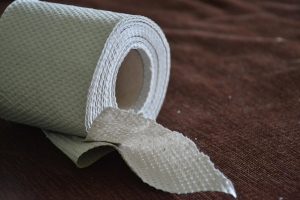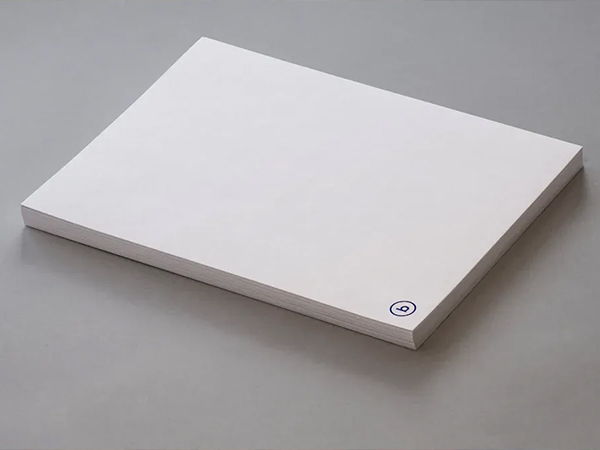
Dry Strength Agents boost fiber bonding by increasing the potential for hydrogen bonding between fibers. You achieve stronger and more durable paper when these agents create more contact points and promote fiber entanglement.
- They enhance inter-fiber bonding through high molecular weight hydrophilic polyelectrolytes.
- Polyelectrolyte complexes form on fiber surfaces, further reinforcing strength.
- Increased contact area and better fiber entanglement result in tougher paper sheets.
You need strong inter-fiber bonds because the strength of individual cellulose fibers already exceeds that of the paper sheet. By using these agents, you improve tensile strength and burst resistance in your final product.
Key Takeaways
- Dry Strength Agents improve fiber bonding, leading to stronger and more durable paper products.
- Using cationic starch and polyacrylamide can significantly enhance tensile and burst strength, making paper more resilient.
- Choosing bio-based and low-dosage agents supports sustainability while maintaining high paper quality.
- Optimizing chemical usage with Dry Strength Agents can reduce costs and improve production efficiency.
- Understanding the compatibility of agents with different systems helps achieve better results in papermaking.
The Role of Dry Strength Agents in Papermaking

Definition and main categories: polyacrylamide, cationic starch, synthetic polymers
You encounter several types of Dry Strength Agents when working to improve paper quality. These agents fall into distinct categories based on their chemical structure and application.
- Cationic starch: You use this natural agent at low concentrations to boost strength and stiffness, especially in printing and writing papers.
- Polyacrylamide: This synthetic polymer enhances tensile strength, burst strength, and tear resistance, making it ideal for packaging papers.
- Carboxymethyl cellulose: You rely on this modified cellulose derivative to improve both wet and dry strength, softness, and absorbency in tissue and towel products.
Polyacrylamides and cationic starches play a vital role in papermaking. Polyacrylamides, with molecular weights ranging from 100,000 to 500,000, deliver effective results even at low concentrations. Cationic starches contain amine functional groups, which help you improve strength, drainage, and retention. These properties make them essential for producing high-quality paper.
| Polymer Type | Chemical Structure Description | Molecular Weight Range (g/mol) | Charge Density Characteristics |
|---|---|---|---|
| Polyacrylamide (PAM) | High molecular weight, water-soluble polymers; synthesized via free radical polymerization. | 10^3 to 20 × 10^6 | Varies (anionic, cationic, or non-ionic) |
| Cationic Starch | Contains amine functional groups; used to improve strength and retention in paper. | N/A | Cationic, anionic, and ampholytic forms available |
Why fiber bonding strength is critical for modern paper quality
You need strong fiber bonding to achieve superior paper performance. The collective strength of molecular interactions, especially hydrogen bonds, directly impacts the durability and usability of your paper products.
- Stronger fiber bonds lead to higher tensile strength and better resistance to tearing.
- You see a high correlation between tensile strength and fiber–fiber bond strength, which means that improving bonding directly enhances paper quality.
- Different pulps, such as mechanical and chemical, require tailored approaches because bonding propensity varies.
Industry standards, like Z Direction Tensile Strength, help you assess internal bond strength. This metric is crucial for evaluating glue bonding and preventing delamination in finished products. You follow procedural standards such as TAPPI T 541 to ensure your paper meets quality benchmarks.
Dry Strength Agents allow you to optimize these properties, giving you control over the final product’s strength and reliability.
Mechanism — How Dry Strength Agents Work

Reinforcing inter-fiber hydrogen bonds.
You rely on Dry Strength Agents to reinforce the natural hydrogen bonds between cellulose fibers. These agents interact directly with cellulose or hemicellulose, forming covalent bonds that strengthen the fiber network. This process increases the number of contact points and creates a more robust paper sheet.
- Dry Strength Agents react with cellulose or hemicellulose, forming covalent bonds between molecules and fibers.
- These covalent linkages enhance the natural hydrogen bonding in the dry sheet, boosting overall paper strength.
- Some agents crosslink during the wet stage, helping the paper maintain strength even when exposed to moisture.
Research shows that macromolecular additives reinforce existing inter-fiber bonds, reduce stress concentrations during drying, and improve sheet consolidation. When you add hydrogen bond acceptors or donors, you modify the hydrogen bond distribution. For example, urea increases interaction sites for cellulose’s hydroxyl groups, while glycerol improves both Young’s modulus and tensile strength in bio-nanocomposites. These changes lead to stronger, more durable paper.
Improving strength in high-filler systems.
You often face challenges when producing paper with high filler content. Fillers can disrupt fiber bonding and reduce sheet strength. Dry Strength Agents help you overcome these issues by forming multiple hydrogen bonds between fibers, even in the presence of fillers.
- Cationic starch adsorbs strongly onto fibers and fillers through electrostatic attraction, improving retention and efficiency.
- Polyvinyl alcohol acts as a powerful binder, reinforcing cellulose fibers and providing high tensile strength, flexibility, and oil resistance.
However, you should be aware of certain limitations in high-filler environments:
| Limitation | Explanation |
|---|---|
| Interaction of cationic and anionic components | Cationic agents are consumed by both fiber surfaces and anionic polymers, reducing effectiveness. |
| High conductivity of fiber stock | High conductivity disrupts ionic bonds and compresses polymer structures, affecting performance. |
| Presence of anionic trash | High levels of anionic trash increase cationic demand, limiting the dosage of effective agents. |
By understanding these mechanisms and limitations, you can select the right Dry Strength Agents and optimize your papermaking process for both strength and efficiency.
Key Benefits for Paper Mills
Higher tensile and burst strength.
You gain a clear advantage in paper strength when you use Dry Strength Agents. These additives increase both tensile and burst strength, which are critical for product durability and performance.
- The correlation between tensile strength and bursting strength is strong, with an R² value of 0.96.
- When you improve tensile strength, you also enhance burst strength, since both depend on the same fiber properties.
- The combination of cationic starch and anionic polyacrylamide can boost the tensile index by up to 60%.
- Adding these agents increases the strain at break from 2.1% to 5%, making your paper more resilient.
You see these improvements across different paper grades, which means you can tailor your approach for packaging, tissue, or specialty papers.
Improved retention and drainage efficiency.
You also benefit from better retention and drainage when you use the right additives. Enhanced retention keeps more fibers, fines, and fillers in the sheet, while improved drainage speeds up production.
Here’s how different systems perform:
| Evidence Description | Outcome |
|---|---|
| Chitosan/bentonite particle retention and drainage system | Significantly enhances retention and drainage performance of the slurry. |
| CNF combined with chitosan | Reduces drainage times, increasing efficiency. |
| Chitosan as a strength agent | Increases bursting index, folding endurance, and tensile index. |
| Retention and drainage agents promote aggregation | Enhance retention of fillers and fines through flocculation. |
| Natural polymers like chitosan | Preferred for environmental reasons. |
You notice that improved retention and drainage lead to higher machine speeds and cleaner operations. This results in greater productivity and better product quality.
Cost reduction through optimized chemical usage.
You can achieve significant cost savings by optimizing your chemical usage. Dry Strength Agents allow you to use lower-cost fibers and increase filler content, which reduces raw material expenses. Improved bonding also means you need less refining energy, cutting operational costs.
- You gain flexibility in fiber selection, which supports sustainable packaging goals.
- Enhanced drainage and dewatering let you run machines faster, maximizing output.
- You may need to invest in new technologies, but the long-term savings and efficiency gains often outweigh the initial costs.
| Evidence Type | Description |
|---|---|
| Raw Material Cost Reduction | Enables use of lower-cost fibers and higher filler loadings. |
| Energy Consumption Decrease | Reduces refining energy requirements. |
| Increased Production Throughput | Allows higher machine speeds and greater output. |
Tip: By carefully selecting and dosing Dry Strength Agents, you can balance performance improvements with cost efficiency, ensuring your mill remains competitive.
Sustainable and Cost-Effective Approaches
Bio-based and low-dosage agents for eco-friendly papermaking.
You can make your papermaking process more sustainable by choosing bio-based and low-dosage agents. These options help you meet growing consumer demand for eco-friendly products. Bio-based agents, such as soy-based polymers and engineered cellulose, come from renewable resources. They are biodegradable and recyclable, which means you reduce your environmental footprint and support a circular economy.
When you use these agents, you also help lower microplastic pollution. Bio-based coatings replace harmful plastic coatings, so you address environmental concerns while maintaining product quality. You will notice that these agents improve tear strength, tensile strength, and burst strength. In many cases, they match or even surpass the performance of synthetic alternatives.
Here are some additional benefits you gain:
- You enhance your brand image by offering sustainable paper products.
- You protect your equipment from corrosion, which lowers maintenance costs.
- You optimize chemical usage, reducing overall consumption and costs.
| Benefit | Description |
|---|---|
| Reduced CO2 Emissions | On-site slurrying of eco-friendly agents cuts transport needs and emissions. |
| Chemical Efficiency | Improved retention and sizing efficiency means you use fewer chemicals. |
Compatibility with neutral/alkaline systems.
You need agents that work well in modern papermaking environments. Many bio-based and advanced synthetic agents show excellent compatibility with neutral and alkaline systems. This compatibility allows you to use a wider range of fillers and pigments, which improves paper brightness and printability.
You also benefit from lower chemical consumption and better process stability. These agents help you maintain high strength and quality, even as you shift away from acidic systems. By choosing the right Dry Strength Agents, you support both sustainability and cost-effectiveness in your mill.
Amazon Chemicals’ Dry Strength Technologies
Advanced high-molecular-weight PAM and cationic polymers.
You can rely on Amazon Chemicals to deliver advanced solutions for your papermaking process. The company offers high-molecular-weight polyacrylamide (PAM) and innovative cationic polymers that target fiber bonding at the molecular level. These products help you achieve superior paper strength and consistency. High-molecular-weight PAM creates long polymer chains that bridge fibers, forming a dense and uniform network. This structure increases the number of contact points between fibers, which leads to higher tensile and burst strength.
Cationic polymers from Amazon Chemicals carry a positive charge. They interact efficiently with the negatively charged cellulose fibers in your pulp. This interaction improves retention and drainage, which boosts your machine speed and reduces downtime. You can also use these polymers in neutral and alkaline systems, giving you flexibility in your process design.
Note: Amazon Chemicals engineers each product to perform at low dosages, so you can optimize chemical usage and reduce costs without sacrificing quality.
Proven mill applications and case references.
You see the impact of Amazon Chemicals’ technologies in real-world mill operations. Many mills have adopted these advanced Dry Strength Agents to solve specific challenges and improve product quality. For example, a packaging mill increased its tensile index by 45% after switching to Amazon Chemicals’ high-molecular-weight PAM. Another mill producing fine paper reported a 30% reduction in refining energy and a 20% increase in filler retention.
Here is a quick overview of typical results:
| Application Area | Performance Gain | Notable Outcome |
|---|---|---|
| Packaging Paper | +45% tensile index | Improved box durability |
| Fine Paper | +20% filler retention | Lower production costs |
| Tissue & Towel | +18% burst strength | Enhanced softness and strength |
You can request detailed case studies from Amazon Chemicals to see how these solutions fit your specific needs. The company provides technical support and on-site optimization to help you maximize the value of your investment.
You improve fiber bonding and overall paper performance when you use Dry Strength Agents. The table below highlights key benefits:
| Statistic | Description |
|---|---|
| Market Growth Rate | Projected CAGR of 3.68% from 2025 to 2035 |
| Strength Improvement | Enhances compression, tensile, and burst resistance |
When selecting these agents, consider sustainability, compliance, and long-term value. For deeper insights, review studies on biopolymer coatings and guides on agent selection. Stay updated on trends like bio-based materials and digital dosing to optimize your results.
FAQ
What is the main purpose of dry strength agents in papermaking?
You use dry strength agents to increase the bonding between cellulose fibers. This results in stronger, more durable paper. These agents help you achieve higher tensile, burst, and compression strength in your finished products.
Can you use dry strength agents with recycled fibers?
Yes, you can. Dry strength agents improve bonding in recycled fibers, which often have lower bonding potential. You enhance sheet strength and quality, even when using high levels of recycled content.
Do dry strength agents affect paper machine runnability?
You benefit from better runnability. Dry strength agents improve retention and drainage, which leads to faster machine speeds and fewer breaks. You also see cleaner operations and more consistent product quality.
Are bio-based dry strength agents as effective as synthetic ones?
Many bio-based agents match or exceed the performance of synthetic options. You gain strength, sustainability, and cost benefits. Always test compatibility with your specific furnish and process.
How do you choose the right dry strength agent for your mill?
| Factor | Consideration |
|---|---|
| Fiber type | Chemical, mechanical, or recycled |
| Filler content | High or low |
| System pH | Acidic, neutral, or alkaline |
| Sustainability | Bio-based or synthetic preference |
You should consult with your supplier to optimize selection.






